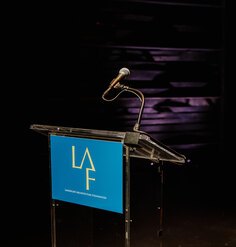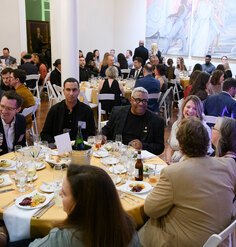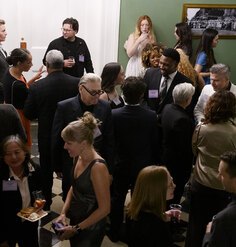Exploring the Research-Practice Gap at the CELA Conference
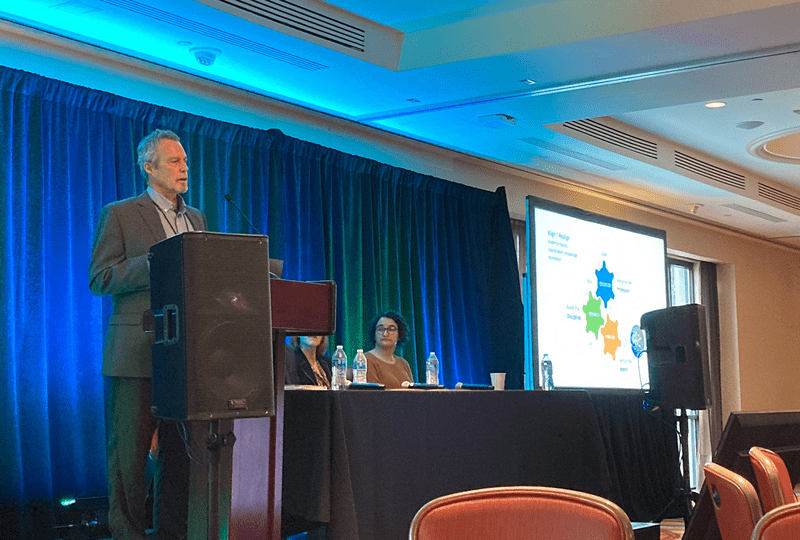
The Landscape Architecture Foundation (LAF) joined several hundred landscape architecture faculty, students, and practitioners next to the famed San Antonio Riverwalk March 15-18 for the 2023 Council of Educators in Landscape Architecture (CELA) Annual Conference. This year’s conference theme was Align|Realign, which allowed conference-goers to investigate “the overlaps and misalignments between what is both taught and researched in academia compared to what the professional market demands.” The theme was expressed through keynotes, individual sessions, and panels – most notably several with practitioners contributing to the conversation alongside their faculty colleagues. As the connection between landscape architecture research and practice is a major focus area for LAF, the conference represented a rich well of content for LAF to keep its finger on the pulse of the discipline’s undertakings and needs.
Former LAF Fellow James LaGro Jr. (2021-22) moderated the conference’s first keynote panel, “Research in Practice: Bridging the Gap between Professionals and Academics.” Robert Ryan, Professor and Chair of the Department of Landscape Architecture and Regional Planning at the University of Massachusetts Amherst, presented his findings related to research activities currently being pursued by landscape architecture firms. He illustrated the different ways that firms are pursuing research on a continuum ranging from “light touch” efforts like informal research experiments, individual projects, and internal research grants, to more aggressive research pursuits like the formation of research labs and nonprofit research firms.
LAF Board Emeritus Allyson Mendenhall, FASLA, of Sasaki and Rebecca Popowsky of OLIN Labs shared research activities conducted at their firms. Key advice for firms in engaging with research provided by Allyson and Rebecca included starting with small experiments, developing partnerships with academics and beyond, offering internal firm grants and sabbaticals to encourage research among staff, and collaborating with allied professionals to expand research capacity. The presenters highlighted the urgent need for the discipline to generate knowledge to address complex problems, the disconnect between academic research and the project-based research that is deeply needed by professionals, and the need to create opportunities for smaller and mid-size firms to engage in research. An audience member also brought up the challenges posed by the “academic firewall”—that published research is often unavailable
or expensive for practitioners to access because it is only available through subscription-based journals.
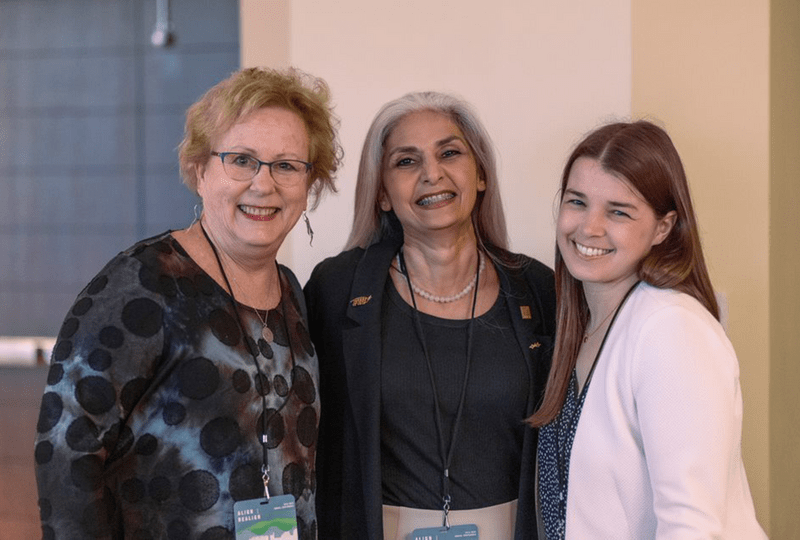
Other notable panels on the intersection of research and practice included one that used the topic of wildfires to highlight key models of knowledge generation between practice and academia, and another panel titled “Mind the Gap: How to Bridge the Gap Between the Academia and Practitioner” that featured a diverse group of faculty and practitioners sharing their views on how to engage students in research through internships, formal programs like LAF’s Case Study Investigation program, and more.
This year’s CELA Lifetime Achievement Award recipient, Joan Iverson Nassauer, FASLA, FCELA, used her keynote to further elaborate on the conference theme. By making a case for the importance of truly transdisciplinary research, Joan highlighted key opportunities and challenges for landscape architectural research and practice. After defining transdisciplinary research as research that uses creative design science, develops new knowledge, utilizes relevant methods from other disciplines, and more, Joan asked, “Why is landscape architecture not at the front of research” in the eyes of the public and of other disciplines? She discussed several issues that have contributed to the disconnect between research and practice and challenged the legitimacy of research in landscape architecture by describing the “two cultures problem,” as described in 1959 by British scientist and novelist C. P. Snow, where science is characterized as in opposition to the arts – along with landscape architects’ own tendencies to represent themselves as experts in many areas, which can undermine other disciplines’ perception of rigor in landscape architectural research.
The conference theme was one of 14 different tracks, so the full conference covered many other topics, including diversity, equity, and inclusion, and spurred important conversations. While the gap between research and practice has long been discussed, this year it had a sense of immediacy due to the conference theme and the immense value of having a number of practitioners in attendance, all working toward the same goal of strengthening the connection between landscape architectural education, research, and practice.
